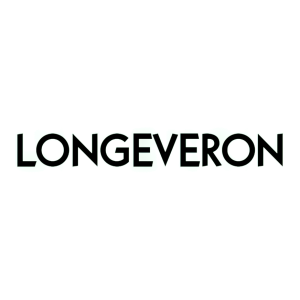Longeveron® Announces Completion of Enrollment of Pivotal Phase 2b Clinical Trial Evaluating Laromestrocel as a Treatment for Hypoplastic Left Heart Syndrome (HLHS)
Rhea-AI Summary
Longeveron (NASDAQ:LGVN) has completed enrollment for its pivotal Phase 2b clinical trial (ELPIS II) evaluating laromestrocel as a treatment for Hypoplastic Left Heart Syndrome (HLHS). The trial enrolled 40 pediatric patients across 12 premier institutions, with top-line results expected in Q3 2026.
The therapy has received Rare Pediatric Disease, Orphan Drug, and Fast Track designations from the FDA. The ELPIS II trial builds on positive ELPIS I results, which showed 100% transplant-free survival up to five years post-treatment, compared to historical control data showing 20% mortality. If approved, the U.S. market potential is estimated at up to $1 billion.
Upon potential FDA approval, Longeveron could receive a Priority Review Voucher, which recently sold for $150-$158 million.
Positive
- ELPIS I showed 100% transplant-free survival rate up to 5 years post-treatment
- Significant market opportunity with U.S. potential of up to $1 billion
- FDA granted multiple special designations (Rare Pediatric Disease, Orphan Drug, Fast Track)
- Potential to receive Priority Review Voucher worth $150-158 million
- FDA confirmed ELPIS II is pivotal for BLA submission
Negative
- Top-line results won't be available until Q3 2026
- Uncertainty around Rare Pediatric Disease PRV program renewal
- Current HLHS treatment shows only 50% survival rate to adolescence
Insights
Longeveron hits milestone with completed ELPIS II enrollment for HLHS therapy; pivotal data expected Q3 2026 with strong regulatory support.
The completion of enrollment in Longeveron's ELPIS II trial represents a significant clinical milestone in addressing Hypoplastic Left Heart Syndrome (HLHS), a rare and devastating congenital heart defect. The 40-patient Phase 2b trial builds upon compelling Phase 1 data, where laromestrocel-treated patients demonstrated 100% transplant-free survival at five years post-treatment—considerably better than the 83% survival rate in historical controls.
The trial design merits attention: its composite primary endpoint intelligently captures both survival and functional cardiac improvements through right ventricular ejection fraction measurements. This approach aligns with both regulatory expectations and clinical relevance for HLHS patients, whose primary challenge is right ventricular failure.
Regulatory positioning appears exceptionally strong. The FDA has already confirmed ELPIS II as pivotal for traditional approval if positive, while granting three special designations (Orphan Drug, Fast Track, and Rare Pediatric Disease). This regulatory framework creates multiple acceleration pathways and potential exclusivity benefits if approved.
The unmet need cannot be overstated—even with current surgical approaches, approximately 50% of HLHS infants don't survive to adolescence. The slight over-enrollment (40 vs. 38 planned patients) reflects both investigator enthusiasm and the dire need for new treatment options. While results remain 12-15 months away, the established safety profile and preliminary efficacy signals position laromestrocel as potentially the first regenerative medicine approach for this devastating condition.
Longeveron's enrollment completion strengthens commercialization timeline with potential $1B market plus valuable Priority Review Voucher opportunity.
Longeveron's announcement represents a critical value inflection point in their HLHS program development timeline. With enrollment completed, the company has significantly de-risked one major development hurdle and established a clear regulatory pathway with the FDA's confirmation that positive ELPIS II results could support a BLA submission.
The market opportunity of up to $1 billion cited by the company appears reasonable given HLHS's status as a rare pediatric condition with approximately 1,000 new cases annually in the US. Considering the life-threatening nature of the condition and limited treatment options, premium pricing would be justified for an effective therapy, potentially reaching $500,000-$750,000 per treatment based on comparable rare disease therapies.
Perhaps equally significant is the Priority Review Voucher (PRV) opportunity. The company accurately cites recent PRV transactions in the $150-158 million range. This non-dilutive capital would be transformative for a company of Longeveron's size, potentially funding additional pipeline programs or strengthening their commercialization infrastructure.
While commercial revenue remains at least 2-3 years away (pending trial success), this milestone provides increased clarity on the development timeline with top-line data expected Q3 2026. The 12-month follow-up period indicates a potential BLA submission in late 2026 or early 2027, suggesting possible commercialization by 2028 if approved. Investors should note that while the PRV program faced uncertainty, the recent House passage of the Give Kids a Chance Act signals potential extension through 2029, which would benefit Longeveron's timeline.
- Top-line trial results are anticipated in the third quarter of 2026, after the final follow-up at 12-months
- Laromestrocel Biological License Application (BLA) submission for full traditional approval for HLHS anticipated in 2026, if ELPIS II results are positive
- U.S. FDA has awarded laromestrocel HLHS program Rare Pediatric Disease designation, Orphan drug designation, and Fast track designation
- Laromestrocel HLHS program addresses unmet medical needs with U.S. market potential of up to
$1 billion
MIAMI, June 24, 2025 (GLOBE NEWSWIRE) -- Longeveron Inc. (NASDAQ: LGVN), a clinical stage regenerative medicine biotechnology company developing cellular therapies for life-threatening and chronic aging-related conditions, today announced that it has achieved full enrollment of the Phase 2b clinical trial (ELPIS II) evaluating its investigational cellular therapy laromestrocel as a potential adjunct treatment for Hypoplastic Left Heart Syndrome (HLHS), a rare pediatric and orphan-designated disease. Top-line trial results are anticipated in the third quarter of 2026, after the final follow-up at 12-months. Laromestrocel is a proprietary, scalable, allogeneic cellular therapy being evaluated in multiple indications.
“Completion of enrollment in this pivotal trial is an important step on the pathway to a potential additional treatment for HLHS,” said Nataliya Agafonova, M.D., Chief Medical Officer of Longeveron. “Current HLHS treatment requires infants to undergo a complex three-stage surgical reconstruction of their heart over the first 3-4 years of their life, yet even with this comprehensive treatment, only
ELPIS II is a Phase 2b clinical trial evaluating laromestrocel as a potential adjunct therapy for HLHS. The clinical trial enrolled 40 pediatric patients at twelve premiere infant and children’s treatment institutions across the country. The trial’s primary endpoint is a composite of survival at 12 months, length of hospitalization and change in right ventricular ejection fraction measured between baseline and 12 months. ELPIS II is being conducted in collaboration with the National Heart, Lung, and Blood Institute (NHLBI) through grants from the National Institutes of Health (NIH).
ELPIS II builds on the positive clinical results of ELPIS I, in which children in the trial experienced
- Five-year post-Glenn procedure Kaplan-Meier survival was
100% in patients treated with laromestrocel in ELPIS I with none requiring heart transplant. This compared to83% survival in the Single Ventricle Reconstruction (SVR) trial through 5 years post-Glenn surgery, and a5.2% heart transplantation rate. - No Major Adverse Cardiovascular Events (MACE) were reported during the study.
- No laromestrocel-related safety issues were reported.
- These findings support the use of laromestrocel as a potential adjunct to HLHS reconstruction surgery to improve transplant-free survival.
In Longeveron’s Type C meeting in October 2024 with the U.S. Food and Drug Administration (FDA), the FDA confirmed ELPIS II is pivotal and, if positive, acceptable for Biological License Application (BLA) submission for full traditional approval. The FDA has granted laromestrocel Orphan Drug designation, Fast Track designation, and Rare Pediatric Disease designation for the treatment of HLHS. Under the Rare Pediatric Disease designation, if Longeveron were to receive FDA marketing approval for laromestrocel for HLHS, the Company could be eligible to receive a Priority Review Voucher (PRV). A PRV allows for priority review of another drug application, reducing the review time from the standard ten months to just six months. The vouchers can be sold or transferred to other companies, with vouchers sold since August 2024 for
About Hypoplastic Left Heart Syndrome (HLHS)
HLHS is a congenital birth defect in which the left ventricle (one of the pumping chambers of the heart) is either severely underdeveloped or missing. As a consequence, infants born with this condition have severely diminished systemic blood flow, which requires them to undergo a complex, three stage heart reconstruction surgery process over the course of the first 5 years of their lives. While these infants can now live into adulthood, early mortality is still extremely high in this population due to right ventricle failure, which is not meant for the increased load demanded for systemic circulation (blood circulation throughout the body). As such, there is an important unmet medical need to improve right ventricular function in these patients to improve both short-term and long-term outcomes.
About Longeveron Inc.
Longeveron is a clinical stage biotechnology company developing regenerative medicines to address unmet medical needs. The Company’s lead investigational product is laromestrocel (Lomecel-B™), an allogeneic mesenchymal stem cell (MSC) therapy product isolated from the bone marrow of young, healthy adult donors. Laromestrocel has multiple potential mechanisms of action encompassing pro-vascular, pro-regenerative, anti-inflammatory, and tissue repair and healing effects with broad potential applications across a spectrum of disease areas. Longeveron is currently pursuing three pipeline indications: hypoplastic left heart syndrome (HLHS), Alzheimer’s disease, and Aging-related Frailty. Laromestrocel development programs have received five distinct and important FDA designations: for the HLHS program - Orphan Drug designation, Fast Track designation, and Rare Pediatric Disease designation; and, for the AD program - Regenerative Medicine Advanced Therapy (RMAT) designation and Fast Track designation. For more information, visit www.longeveron.com or follow Longeveron on LinkedIn, X, and Instagram.
Forward-Looking Statements
Certain statements in this press release that are not historical facts are forward-looking statements made pursuant to the safe harbor provisions of the Private Securities Litigation Reform Act of 1995, which reflect management’s current expectations, assumptions, and estimates of future operations, performance and economic conditions, and involve known and unknown risks, uncertainties, and other important factors that could cause actual results, performance, or achievements to differ materially from those anticipated, expressed, or implied by the statements made herein. Forward-looking statements are generally identifiable by the use of forward-looking terminology such as “anticipate,” “believe,” “contemplate,” “continue,” “could,” “estimate,” “expects,” “intend,” “looks to,” “may,” “on condition,” “plan,” “potential,” “predict,” “preliminary,” “project,” “see,” “should,” “target,” “will,” “would,” or the negative thereof or comparable terminology, or by discussion of strategy or goals or other future events, circumstances, or effects and include, but are not limited to, statements about the various below-listed factors. Factors that could cause actual results to differ materially from those expressed or implied in any forward-looking statements in this release include, but are not limited to, our cash position and need to raise additional capital, the difficulties we may face in obtaining access to capital, and the dilutive impact it may have on our investors; our financial performance, and ability to continue as a going concern; the period over which we estimate our existing cash and cash equivalents will be sufficient to fund our future operating expenses and capital expenditure requirements; the ability of our clinical trials to demonstrate safety and efficacy of our product candidates, and other positive results; the timing and focus of our ongoing and future preclinical studies and clinical trials, and the reporting of data from those studies and trials; the size of the market opportunity for certain of our product candidates, including our estimates of the number of patients who suffer from the diseases we are targeting; our ability to scale production and commercialize the product candidate for certain indications; the success of competing therapies that are or may become available; the beneficial characteristics, safety, efficacy and therapeutic effects of our product candidates; our ability to obtain and maintain regulatory approval of our product candidates in the U.S. and other jurisdictions; our plans relating to the further development of our product candidates, including additional disease states or indications we may pursue; our plans and ability to obtain or protect intellectual property rights, including extensions of existing patent terms where available and our ability to avoid infringing the intellectual property rights of others; the need to hire additional personnel and our ability to attract and retain such personnel; and our estimates regarding expenses, future revenue, capital requirements and needs for additional financing.
Further information relating to factors that may impact the Company’s results and forward-looking statements are disclosed in the Company’s filings with the Securities and Exchange Commission, including Longeveron’s Annual Report on Form 10-K for the year ended December 31, 2024, filed with the Securities and Exchange Commission on February 28, 2025, its Quarterly Reports on Form 10-Q, and its Current Reports on Form 8-K. The Company operates in highly competitive and rapidly changing environment; therefore, new factors may arise, and it is not possible for the Company’s management to predict all such factors that may arise nor assess the impact of such factors or the extent to which any individual factor or combination thereof, may cause results to differ materially from those contained in any forward-looking statements. The forward-looking statements contained in this press release are made as of the date of this press release based on information available as of the date of this press release, are inherently uncertain, and the Company disclaims any intention or obligation, other than imposed by law, to update or revise any forward-looking statements, whether as a result of new information, future events, or otherwise.
Investor and Media Contact:
Derek Cole
Investor Relations Advisory Solutions
derek.cole@iradvisory.com
A photo accompanying this announcement is available at https://www.globenewswire.com/NewsRoom/AttachmentNg/e9e96d9c-d6c3-4aec-ba85-36631b520211










